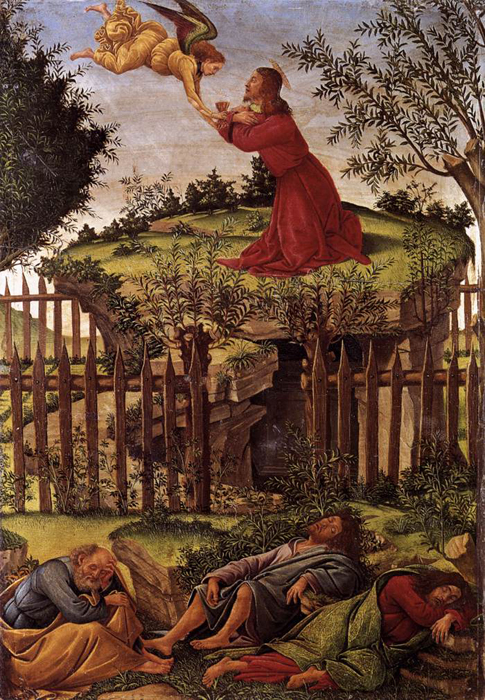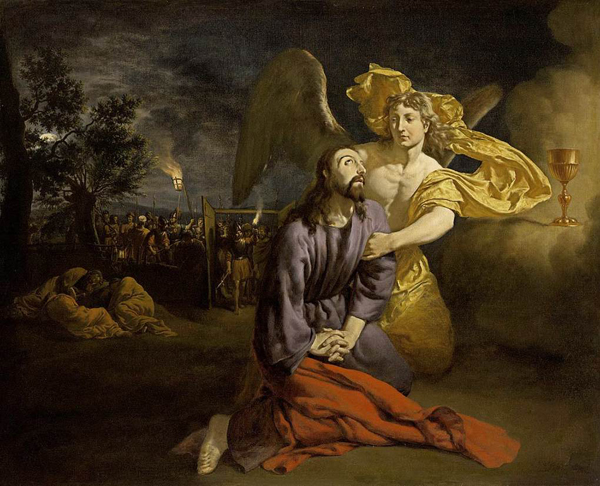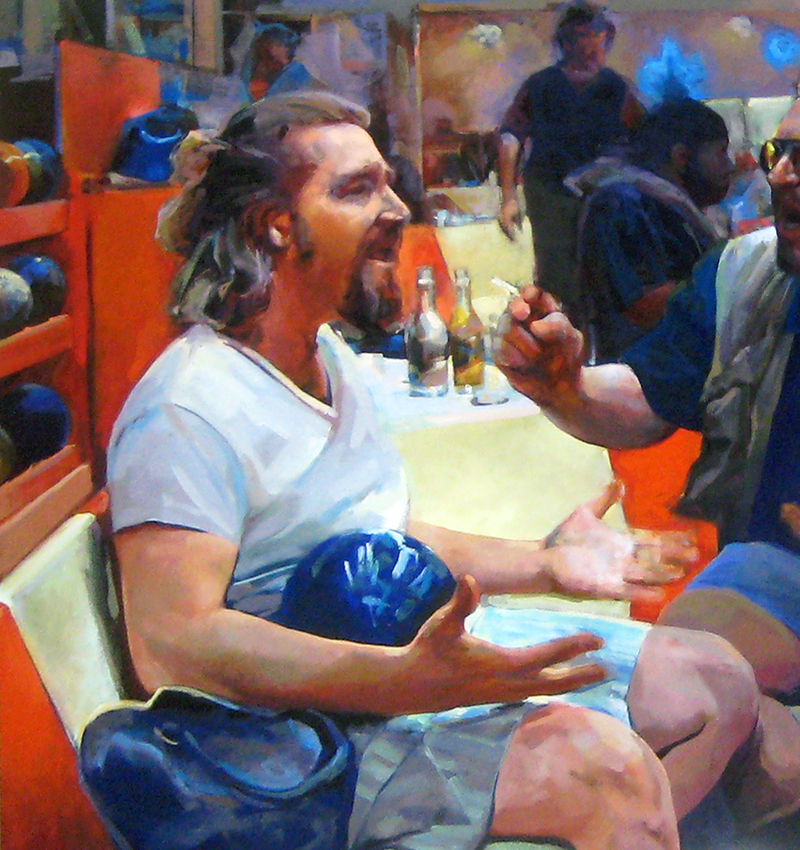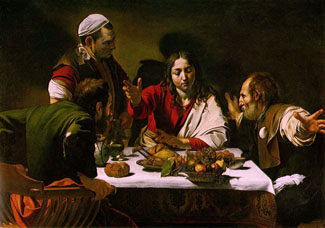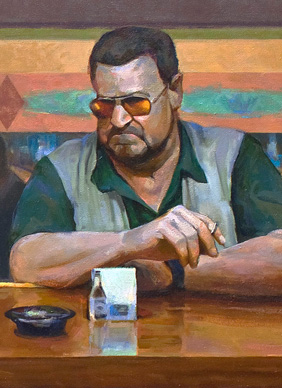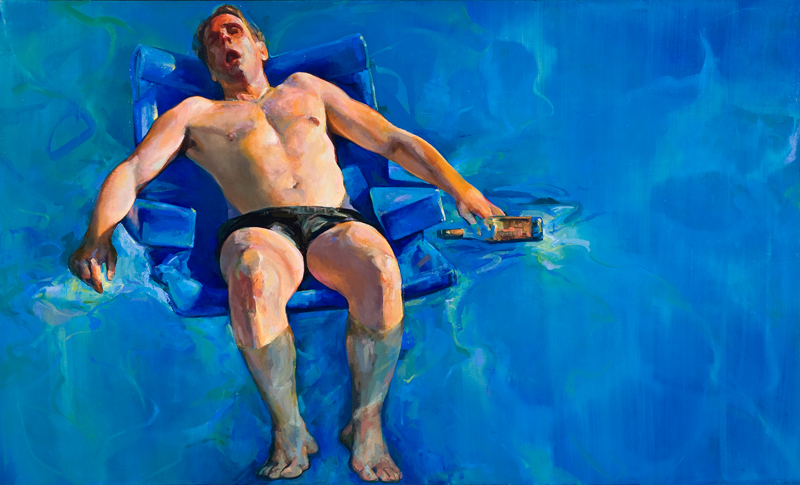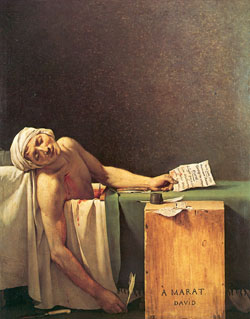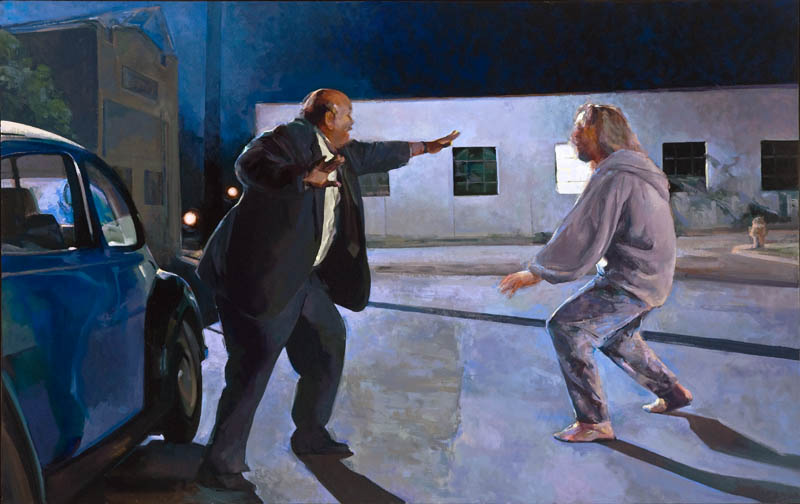
The Agony in the Garden (After Carracci) • Joe Forkan 2006-2011 oil on linen, 76" x 48" (193.04 cm x 121.92)
Here’s another recently completed painting from The Lebowski Cycle. The fall show at The Frank M. Doyle Arts Pavilion is rapidly approaching, and I’m wrapping up paintings that have literally been in constant renegotiation in the studio for years.
This one, like about half of the paintings in the series, is based on paintings dealing with traditional Bible stories. The Agony in the Garden has been a subject for religious paintings dating back to at least the 13th century. Biblical and mythological stories have a surprising amount of variation in how they are depicted and reinterpreted by artists of different eras. For this painting, I was specifically looking at Carracci’s Agony in the Garden from about 1590, but also at paintings by Sandro Botticelli’s from 1500 and Adriaen van de Velde from 1665.
…and I was also looking at The Big Lebowski, or course.
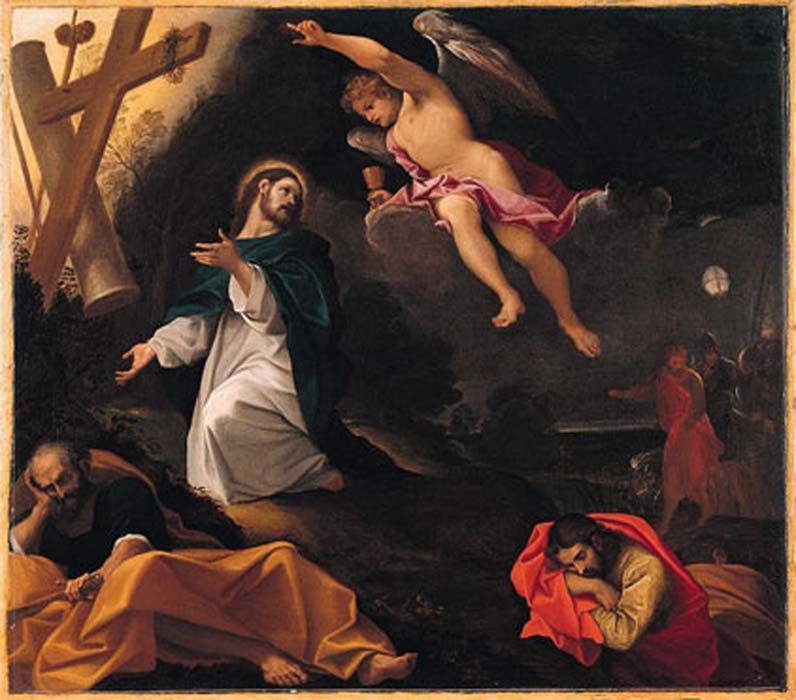
The Agony in the Garden Ludovico Carracci - about 1590 Oil on canvas 100.3 cm x 114.3 cm (39.5" x 45") The National Gallery, London
Working within the traditions of genre and narrative as an approach to making paintings may not leave a lot of room for the invention of new forms or for a great deal of formal novelty, but superimposing multiple narratives does seem to allow for divergent and complicated takes on each of the stories.
Looking through western art you can see the number of ways these well worn narratives have been reconfigured, both to communicate older themes to new audiences, and also to use the stories as a leaping off point for other purposes.
I think that in genre and narrative painting, where the structures are a given, whatever is different from the story as it was received by the artist becomes part of the content.
Hopefully, there are a lot of ways to enter the work.

